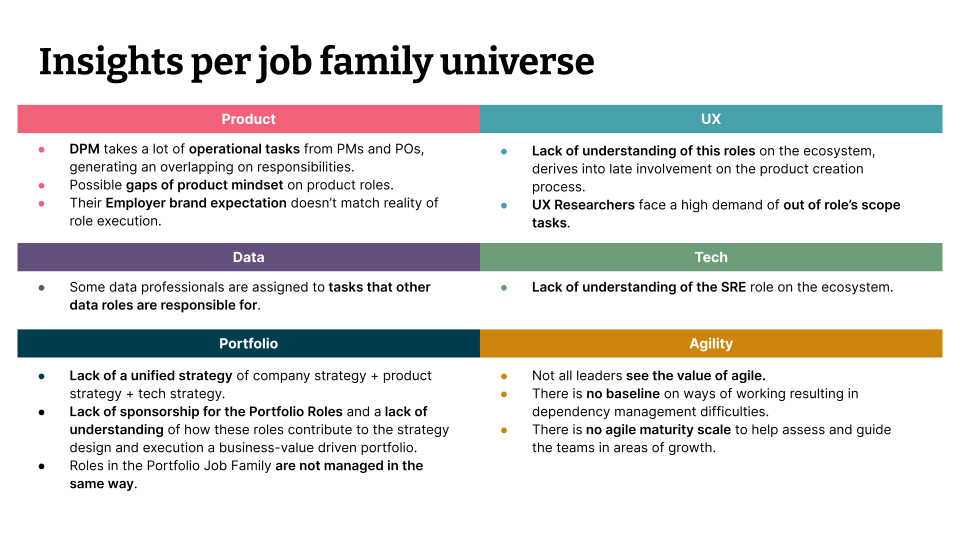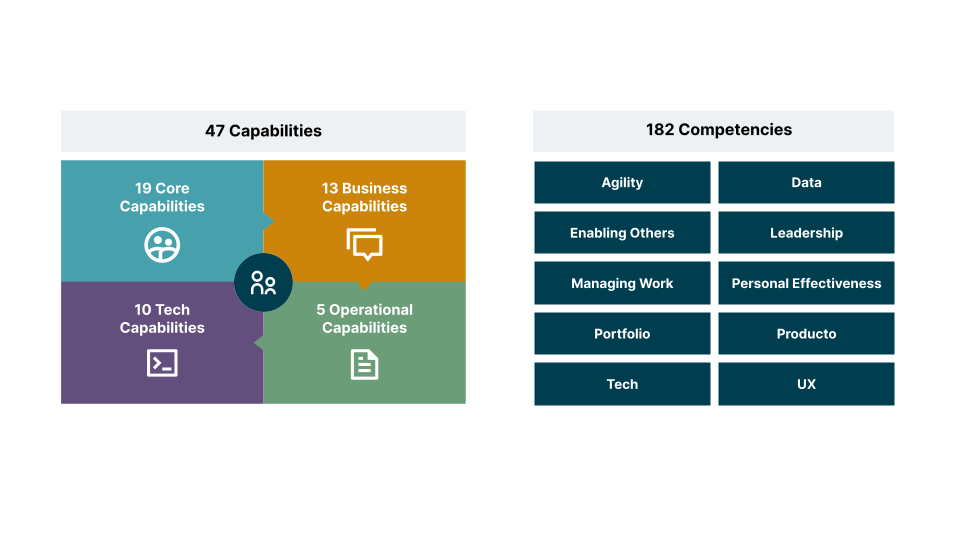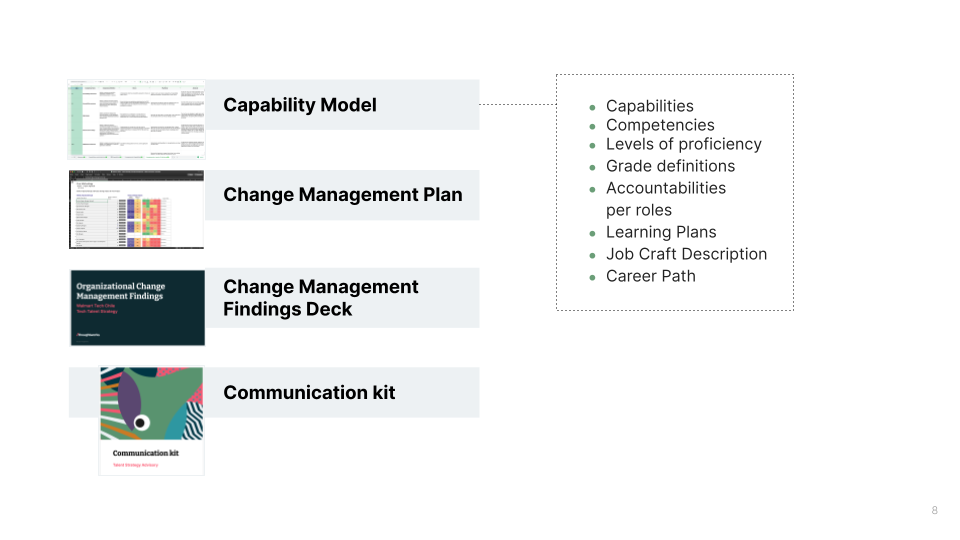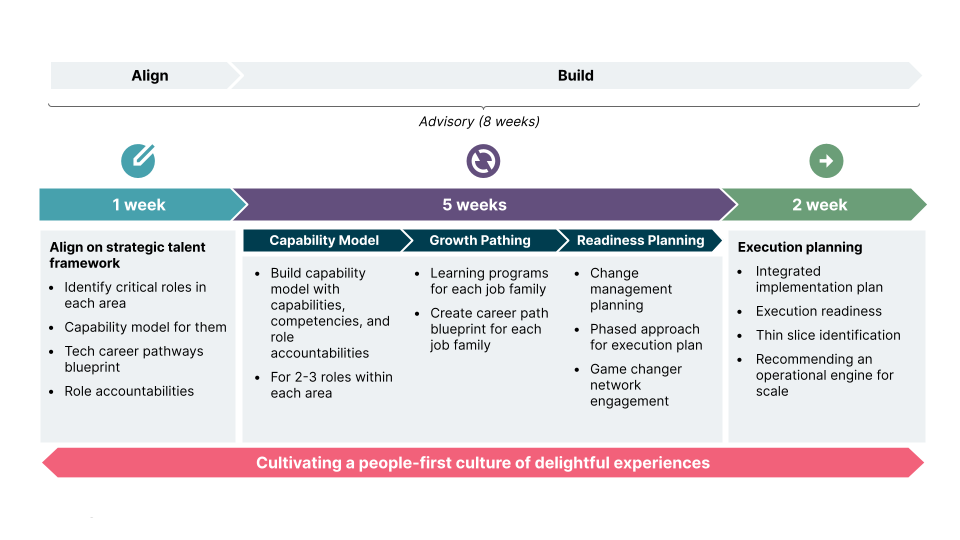The client
One of the main players in Chile’s retail industry, dominates the market with an extensive range of food and merchandise, available across its expansive network of over 400 supermarkets spanning the entire national territory. At the core of their operations lies an unwavering commitment to its primary mission: to save their customers money, so they can live better.
The challenge
This retailer has a technological division of over a 1,000 employees, made up mainly of developers, tech product and infrastructure roles, who are responsible for creating and maintaining all their applications, websites, systems and platforms. This organization grew rapidly, from 200 people to 1,200 in just a couple of years and the management of the employee journey took its toll on the process.
As a result, they started having problems retaining and bringing on board talented people, therefore they were not able to fulfill one of their goals: to be the preferred workplace for technologists in Chile. They realized they needed to create a Talent area within their organization. This would enable them to map the pain points of the employee journey, and to start managing this in a more intentional manner, throughout all employee journey phases. They also told us there was a lack of clarity when it came to roles, responsibilities and accountabilities, and that many other problems stemmed from this.
Here is some of the information we gathered from them:


To offer a better employee experience throughout this journey, they needed a capability model that could be used as the base for all the phases of the journey. The purpose was to help the recruiting team understand what to look for in candidates, and in existing employees, in an effort to set clear expectations. This meant they would have better ways of measuring performance, and creating career and learning paths that provide employees with an exciting workplace where they can see themselves growing and improving.
Overall, they wanted to lower their attrition rates, increase the average employee tenure and improve their employee NPS (Net Promoter Score).
The solution
Within a span of just eight weeks, Thoughtworks successfully developed a comprehensive capability model encompassing 17 distinct roles across six core areas of the organization. This model includes a range of essential components such as:
Clearly defined capabilities
Competencies categorized into four proficiency levels
Clear grade definitions
Job descriptions
A RACI matrix for effective role clarity
Curated learning resources tailored to each job family
Career pathways
A change management plan
An execution strategy for implementing this transformative change throughout their organization
Capability Model


Deliverables


To create this, we formed a multidisciplinary team with ten Thoughtworkers and four people from their new talent area, with whom we co-created the capability model.
Throughout the process, we followed a structured approach for each deliverable. Initially, we conducted a thorough assessment phase to gain a comprehensive understanding of the existing resources and frameworks within them. With this knowledge, our internal team diligently crafted an initial draft of the work. To ensure accuracy and alignment, we engaged in iterative discussions with their Talent Team, incorporating their valuable input and refining the deliverables accordingly.
Furthermore, we actively collaborated with representatives from various areas within them, tailoring our work to the specific requirements of each role. This collaborative approach allowed us to capture diverse perspectives and ensure the final outcomes truly resonated with the unique needs of the organization.
Our work was organized into these activities:
Timeline


For this project, we aligned with the DTO (Digital Transformation and Operations) service line from the US, to connect with the Talent Strategy service.
We experienced two major challenges on this assignment. The first one had to do with the necessity to push the organization to decide on some structural questions that had been open for a long time, decisions that were needed so we could design a framework that could be applied in a standardized way.
The second challenge was raising awareness on the executive level of what needed to change.
Some of the key learnings were:
In this type of engagement, when you co-create with the client and involve them in the day-to-day activities, the chances of a successful implementation increase dramatically.
It's vital to get continuous feedback and course correction from everyone who will be impacted by the changes the organization needs to make for a successful implementation.
We need full and consistent commitment from our primary stakeholders and have a permanent connection with the C-levels of the company, to have them as sponsors when things get difficult or complex.
It's important to guide our clients through tough decisions, showing them different scenarios and a trade-off analysis, so they can be agile and decisive.
It’s good to spend some time designing crucial conversations to bring difficult topics to the client, and make sure we have the right people for each conversation.
We gave them a phased roll out plan with a thin slice approach for them to execute during 2023. Now they are capable of managing employees’ journeys and they plan to start rolling out their talent strategy this year. We are looking for a place to be part of the implementation of this strategy.


















